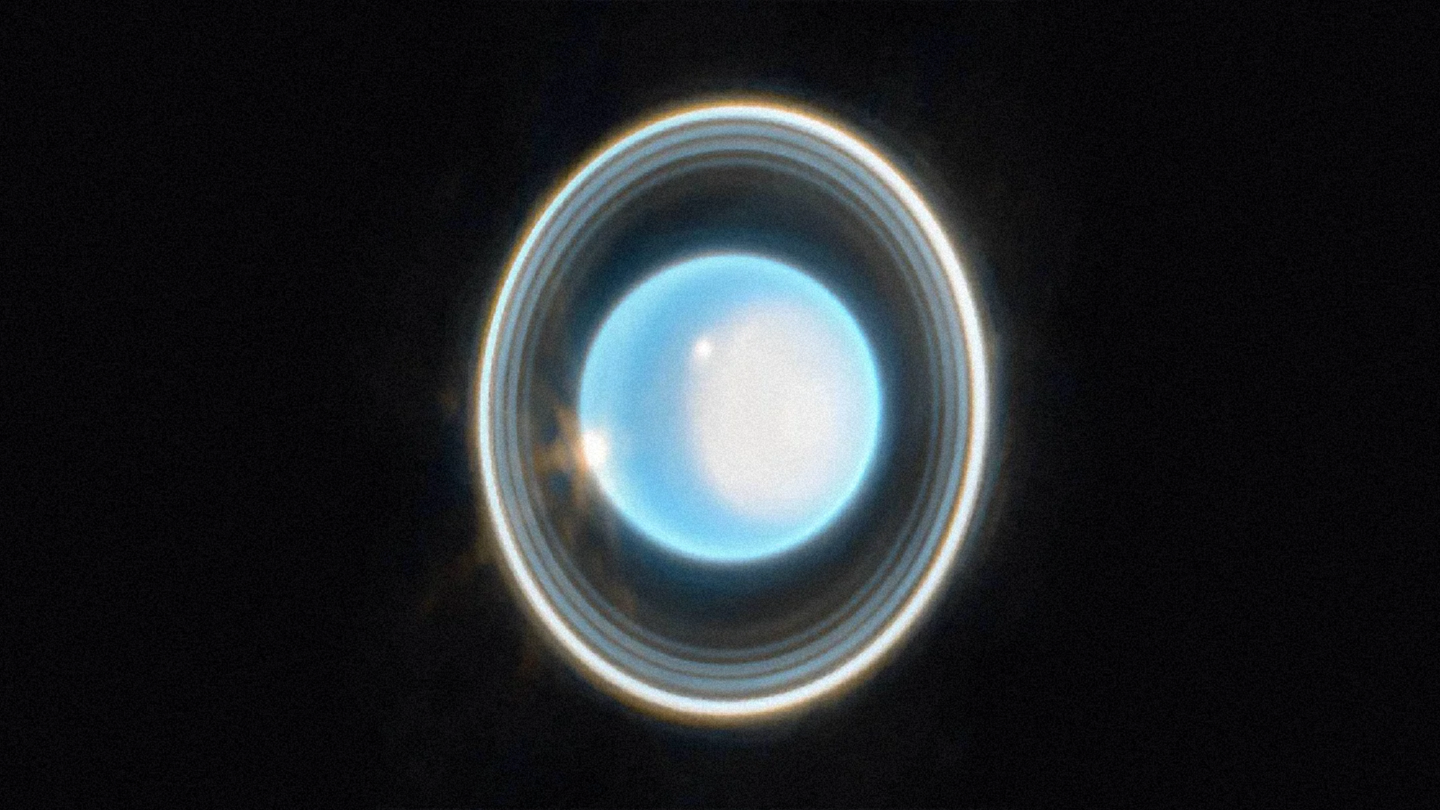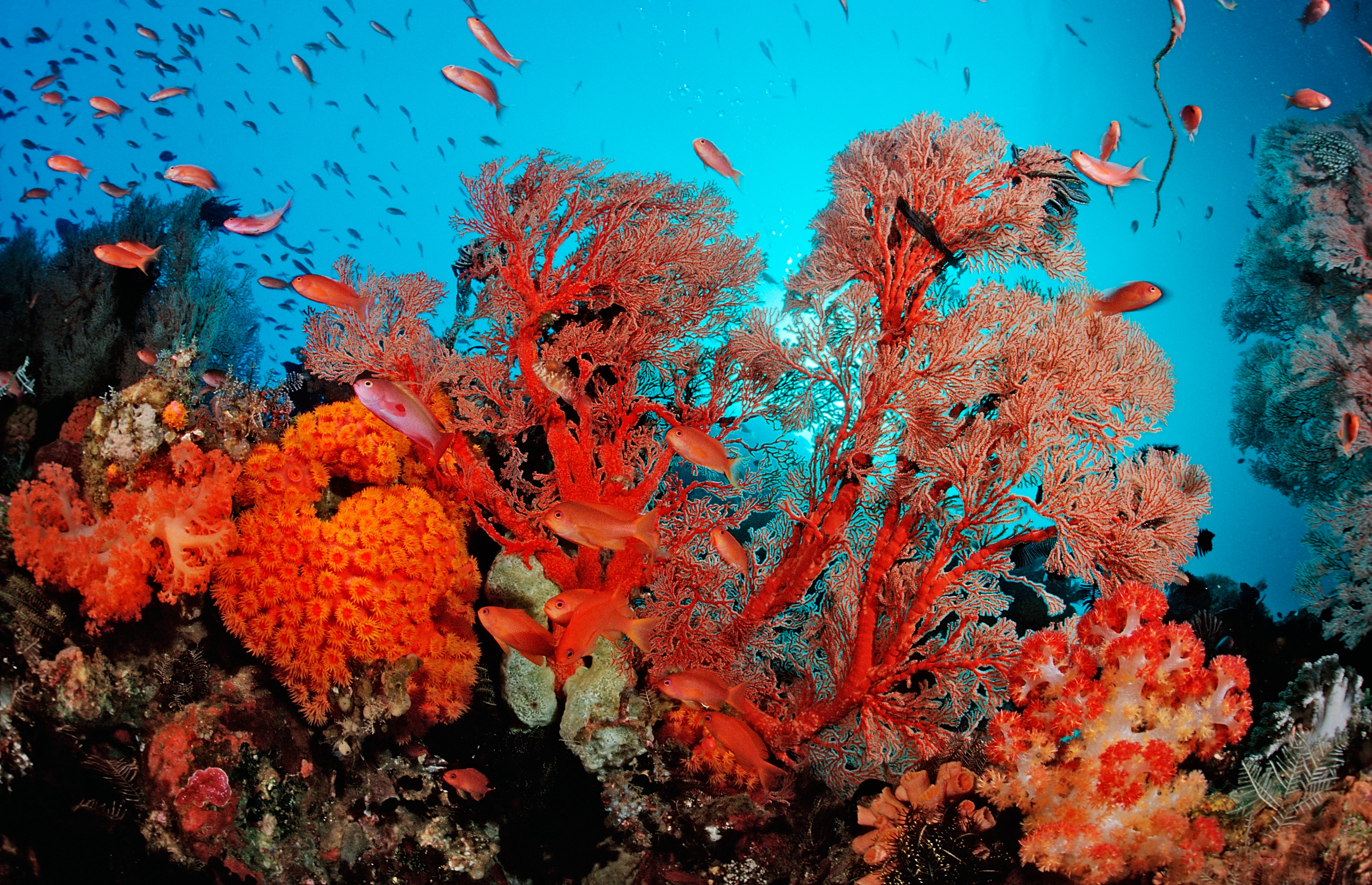The seventh planet boasts 13 known rings and a unique polar cap.
By Laura Baisas |

This zoomed-in image of Uranus, captured by Webb’s Near-Infrared Camera (NIRCam) reveals stunning views of the planet’s rings. SCIENCE: NASA, ESA, CSA, STScI. IMAGE PROCESSING: Joseph DePasquale (STScI)
In a sequel to its image of the planet Neptune’s rings in September 2022the James Webb Space Telescope (JWST) has taken a new image of the ice giant Uranus. The new view of the seventh planet from the sun was taken on February 6 and released to the public on April 6. It shows off Uranus’ rings and some of the bright features in its atmosphere.
[Related:[Related:Expect NASA to probe Uranus within the next 10 years.]
The image was taken with NIRCam as a short 12-minute exposure and combines data from two filters, one shown in blue and one in orange. Uranus typically displays a blue hue naturally.
Of the planet’s 13 known rings11 are visible in the image. According to NASAsome of these rings are so bright that they appear to merge into a larger ring when close together while observed with JWST. Nine are classed as the main rings of the planet, and two are the fainter dusty rings. These dusty rings have only ever been imaged by the Voyager 2 spacecraft as it flew past the planet in 1986 and with the Keck Observatory’s advanced adaptive optics in the early 2000s. Scientists expect that future images will also reveal the two even more faint outer rings that the Hubble Space Telescope discovered in 2007.

The new image also captured many of Uranus’ 27 known moons. Many of the moons are too small and faint to be seen in this image, but six can be seen in the wide-view. Uranus is categorized as an ice giant due to the chemical make-up of its interior. The majority of Uranus’ mass is believed to be a hot, dense, fluid of water, methane, and ammonia above a small and rocky core.
Among the planets in our solar system, Uranus has a unique rotation. It rotates on its side at a roughly 90-degree angle, which causes extreme seasons. The planet’s poles experience multiple years of constant sunlight, and then an equal number of years in total darkness. It takes the planet 84 years to orbit the sun and its northern pole is currently in its late spring. Uranus’ next northern summer isn’t until 2028.
[Related:[Related:Uranus’s quirks and hidden features have astronomers jazzed about a direct mission.]
Uranus also has a unique polar cap on the right side of the planet. It’s visible as a brightening at the pole facing the sun, and seems to appear when the pole enters direct sunlight during the summer and vanishes in the autumn. JWST’s data is expected to help scientists understand what’s behind this mechanism and has already noticed a subtle brightening at the cap’s center. NASA believes that JWST’s Near-Infrared Camera NIRCam’s sensitivity to longer wavelengths may be why they can see this enhanced Uranus polar feature, since it has not been seen as clearly with other powerful telescopes.
Additionally, a bright cloud lies at the edge of the polar cap and another can be seen on the planet’s left limb. The JWST team believes that these clouds are likely connected to storm activity.
More imaging and additional studies of the planet are currently in the works by multiple space agenciesafter the National Academies of Sciences, Engineering, and Medicine identified Uranus science as a priority in its 2023-2033 Planetary Science and Astrobiology decadal survey. This 10 year-long study will likely include a study of Saturn’s moons and sending a probe to Uranus.
“Sending a flagship to Uranus makes a lot of sense,” because Uranus and Neptune “are fairly unexplored worlds,” Mark Marley, a planetary scientist at the University of Arizona and director of the Lunar and Planetary Laboratory, told PopSci last year. Marley also called the future study it “clear-eyed,” and said that learning more about Uranus will help scientists understand both the formation of our solar system and even some exoplanets.
Note: This article have been indexed to our site. We do not claim legitimacy, ownership or copyright of any of the content above. To see the article at original source Click Here













